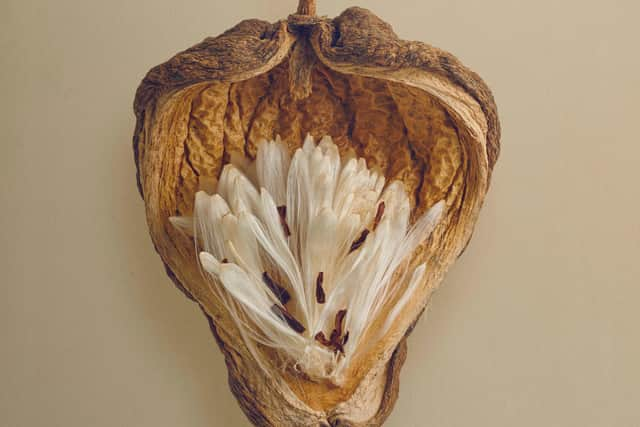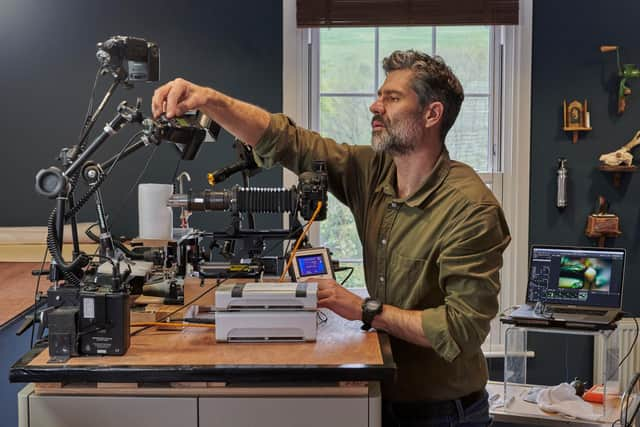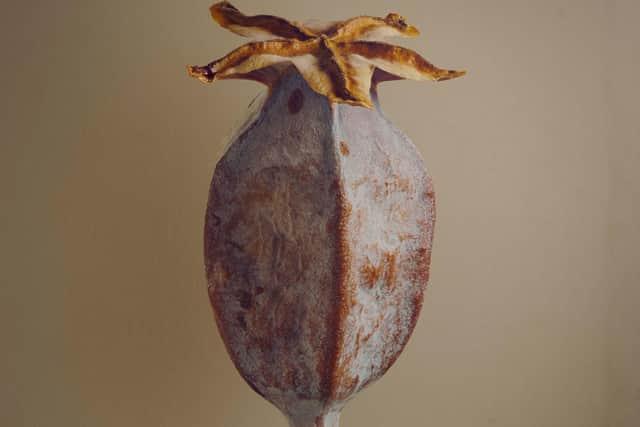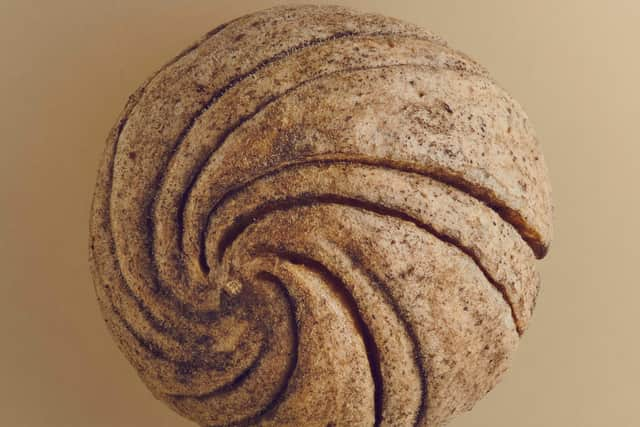Photographer spent six months magnifying seeds and fruits at the Royal Botanic Garden Edinburgh
Let us know what you think and join the conversation at the bottom of this article.
Award-winning macro photographer Levon Biss spent six months at the Royal Botanic Garden Edinburgh (RBGE) capturing the breathtaking and beautiful details of the world of carpology -- the study of seeds and fruits -- in its vast herbarium.
His botanical pictures, magnified at up to 80 times life size, reveal minute features and textures normally invisible to the eye, and offer insight into the weird and wonderful adaptations that have evolved over thousands of years.


Advertisement
Hide AdAdvertisement
Hide AdAlso on show will be some of the three million specimens kept in the herbarium, the city's "library of material". Some are over 100 years old, collected from all over the world, from Scotland to South Africa and from Turkey to Trinidad and Tobago, or cultivated at the RBGE.
Biss, whose work has featured in galleries around the world, said today/yesterday [TUES]: "Working at extreme levels of magnification, I look at the world a little differently from most people -- once you open up that world it's amazing what you can find.
"I'd had this idea for some time, to look at seeds at high magnification. I'd done some tests and knew there was a possibility there would be a project there.
"We went through drawer after drawer - thousands and thousands of specimens - to pull out the ones I thought were the most visually interesting, and that had entertaining stories behind them."


Among the fascinating species is the Electric Shock Plant, native to Brazil and Argentina and cultivated in the RBGE. A type of "rock nettle", if an animal tries to eat the plant, the tios of its minute stinging hairs break off and deposit noxious substances that give the sensation of an electric shock in the animal's mouth.
Another from Brazil is a fruit from a shrub with a trunk so hard it is known by its Portuguese name Quebra machado - meaning the Axe Breaker. It was collected by legendary late RBGE botanist Jimmy Ratter, whose research in the savannahs of central Brazil led to its recognition as a globally important biodiversity hotspot.
Love-In-A-Mist is also known as the "Devil in the Bush" because its fruit resembles the head of a horned fiend hidden by branches. Used as a condiment or healing herb, in India, the seeds are also placed among clothes and bed linen to repel moths. The Devil's Claw, from the US, is named for the two curved horns on its fruit.
The Opium Poppy is also featured; notorious for its association with drug-related crime. Heroin is a highly addictive derivative of morphine, an alkaloid present in opium. However, medicinal use of the species dates back thousands of years.


Advertisement
Hide AdAdvertisement
Hide AdCloser to home, a tiny specimen of Scottish Primrose features - collected by Orcadian botanist Henry Halco Johnston in 1919. Unique to Scotland, it only grows in the grasslands of the north coast and Orkney where it is under threat from habitat loss and overgrazing.
Biss, who uses common names instead of the Latin to help engage people, said: "Each of the specimens has its own story.
"I was going through the specimens, pulling out tiny boxes from wooden cabinets, and on them I would find handwritten labels. I might have a little scrap of paper -- it could be a piece of Peruvian newspaper -- with the botanist's notes about the surrounding environment where the specimen was found.


"One had written that he had found this seed 'in a wholly unremarkable environment'. I imagined him up to his knees in swamp water, walking through horrible conditions for weeks to find this specimen and now here it is under my camera and it is being given another life.
"My work is a celebration of the hard work all of these botanists have done to find them and bring them together in this collection."
He added: "These seeds are stunning but everything in nature has a function and every design element on every single one is there for a specific purpose, adapted for that particular seed in that particular region of the world.
"You've got the Electric Shock Plant, which looks so beautiful in your hand with its swirling patterns, but is a nasty little thing.
"There's the Castor Oil Plant, which produces the seed that contains ricin, one of the world's most toxic substances - these little seeds are stunningly beautiful up close.
Advertisement
Hide AdAdvertisement
Hide Ad"Then you've got the Scottish Primrose - Scotland has a huge history at the forefront of botanical discovery and research. I think it's important to represent Scotland, where this entire collection is housed.
"I hope people view the exhibition with a sense of wonderment, and I hope it encourages a sense of curiosity, particularly among children. The next generation needs to understand the beauty and the importance of nature."
The RBGE's herbarium houses more than three million specimens of dried plants collected from all over the world, covering a period of over three hundred years.
They provide snapshots of botanical history that can be used by scientists to document plants' responses to changes in the environment or analyse the conservation status of rare species
New specimens, collected by staff, students and international colleagues are being added at a rate of about ten thousand per year.
READ MORE: It's a tall order as giant palm tree faces the chop at the Royal Botanic Garden Edinburgh
Lesley Scott, assistant herbarium curator, added: "These extraordinarily detailed images capture a varied range of surface details, and we are given a tantalising glimpse of seeds still nestled in their fruits.
"Some of the images show the mechanisms plants use to achieve seed dispersal, displaying papery wings and other lightweight structures that aid flight. Others show the remnants of pulpy material that would have attracted birds and mammals to take the fruit, later depositing the seeds far away from the parent plant and thus giving them a fighting chance of germination and survival."
David Harris, RBGE herbarium curator, said: "Here, at the intersection between art and science, we find beauty. It is my hope that these photographs will inspire people to engage more with plants for a better future for us all."
Advertisement
Hide AdAdvertisement
Hide Ad* The Hidden Beauty of Seeds and Fruits, which is free to enter, opens at the Royal Botanic Garden Edinburgh on Friday May 28 and runs until September 26. An accompanying book is published by Abrams, priced £30.
A message from the Editor:
Thank you for reading this article. We're more reliant on your support than ever as the shift in consumer habits brought about by coronavirus impacts our advertisers.
If you haven't already, please consider supporting our trusted, fact-checked journalism by taking out a digital subscription.
Comments
Want to join the conversation? Please or to comment on this article.